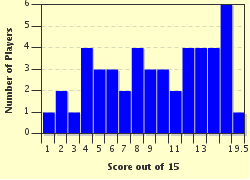Quiz Answer Key and Fun Facts
1. If f(x)=x^2+3x+1, then what is the value of f(-2)?
2. If f(x)=x^5-x^2, then what is the value of f(3)?
3. If a function is odd, then which statement is true?
4. Which of the following functions is even?
5. What is the domain of the function f(x)=1/sqrt(x-5)?
6. What is the range of the function f(x)=1/(x-4)?
7. What is the y-intercept of the linear function x+2y=3?
8. What are the x-intercepts of the parabola y=x^2+2x-3?
9. If a circle has equation (x-3)^2+(y-1)^2=4, then which co-ordinates represent the centre of the circle?
10. What is the correct equation for a semi-circle that lies above the x-axis and has a y-intercept and radius of 3?
11. What is the smallest possible y-value for the function y=abs(x)-1?
12. For the exponential functions y=a^x and y=a^(-x), where a is any positive constant, the y-intercept is always equal to what?
13. What is the limit of (x-2)/(x^2-4) as x approaches 2?
14. What are the vertical and horizontal asymptotes of the hyperbola y=1/(x+2)?
15. What is the domain of the function f(x)=log(x-3)?
Source: Author
dialga483
This quiz was reviewed by FunTrivia editor
rossian before going online.
Any errors found in FunTrivia content are routinely corrected through our feedback system.

